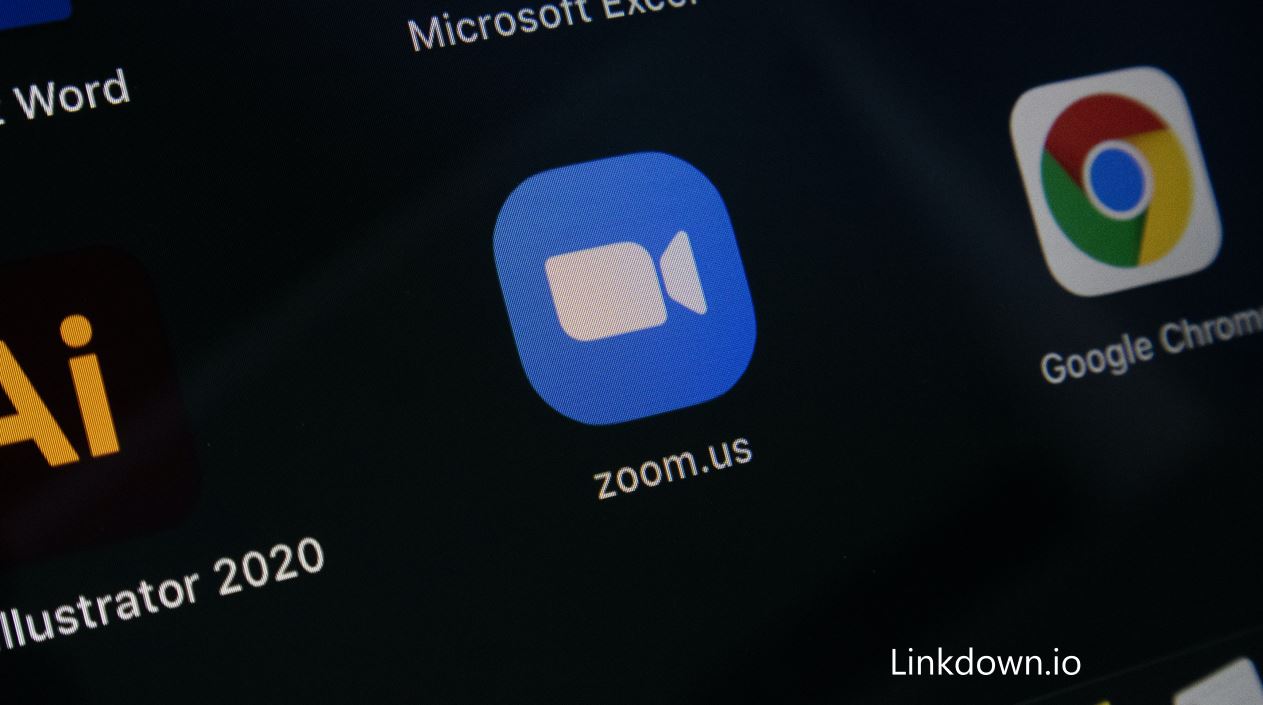Zoom is a video conferencing and online communication platform that allows users to participate in virtual meetings, webinars, and remote collaborations. It provides a range of features for video and audio communication, screen sharing, and collaboration tools.
To use Zoom, you need to have the Zoom application installed on your computer, smartphone, or tablet. You can also access Zoom through a web browser. Zoom offers both free and paid plans, with different features and limitations depending on the plan.
While Zoom has made efforts to enhance security, it is still crucial for users to take precautions to ensure the security of their meetings. This includes not sharing meeting links publicly, using strong passwords, and being mindful of participants’ actions during the meeting.
For the most up-to-date information on Zoom’s security practices and recommendations, it is advisable to visit the official Zoom website and review their security resources and guidelines.
Setup Zoom For Meeting
Joining a meeting: If you are invited to a meeting, you will typically receive a meeting link or ID. Click on the link or enter the meeting ID in the Zoom app or website. You may be prompted to download and install the Zoom application if you haven’t done so already.
Audio and video setup: Once you join a meeting, you can choose to enable or disable your audio and video. You can also test your audio and video settings before joining the meeting to ensure they are working properly.
Participating in the meeting: During the meeting, you can engage in video and audio communication with other participants. You can also use features like chat, screen sharing, virtual backgrounds, and breakout rooms depending on the host’s settings and your permissions.
Ending the meeting: When the meeting is over, the host or organizer will typically end the session for all participants. You can then exit the meeting or close the Zoom application.
Zoom also offers additional features for hosting meetings, such as scheduling meetings in advance, creating recurring meetings, and managing participants. These features are available to hosts and require a Zoom account.
It’s important to note that Zoom has various security and privacy settings that users should be aware of to ensure a safe and protected meeting experience.
Please keep in mind that this information is based on the knowledge available up until September 2021, and there may have been updates or changes to Zoom since then.

Free or Paid Zoom
Zoom offers both free and paid plans to cater to different user needs. Here’s an overview of the free and paid options:
Free Plan:
Zoom’s free plan provides basic video conferencing features that are suitable for personal and small-scale use. Some key features of the free plan include:
Host up to 100 participants (limited to 40 minutes for group meetings of 3 or more participants).
Unlimited one-on-one meetings with no time limit.
HD video and audio.
Screen sharing and virtual backgrounds.
Breakout rooms for smaller group discussions.
Chat functionality.
Recording of meetings (local recording).
Increased participant limits (up to thousands of participants, depending on the plan).
Paid Plans
Zoom offers several paid plans with enhanced features and increased participant limits. These plans are designed for businesses, organizations, and users with more advanced requirements. Some notable features of the paid plans include:
Longer meeting durations for group meetings.
Advanced administrative controls and user management.
Cloud recording and transcription.
Reporting and analytics.
Integrations with other productivity tools.
Live streaming options.
Dedicated customer support.
The paid plans offered by Zoom include Zoom Pro, Zoom Business, and Zoom Enterprise. These plans have different pricing tiers and feature sets to accommodate various user needs and organizational requirements.
It’s worth noting that Zoom’s pricing and plans are subject to change, so it’s advisable to visit the official Zoom website or contact Zoom directly to get the most up-to-date information on their offerings.
Zoom Safe & Secure
Zoom has taken significant steps to enhance the safety and security of its platform. However, like any online communication tool, it is important to follow best practices to ensure a safe and secure meeting experience. Here are some key aspects of Zoom’s safety and security measures:
Encryption: Zoom uses end-to-end encryption for meetings to protect the privacy and security of participants’ data and communications. This means that the content of meetings is encrypted as it travels between participants’ devices and Zoom’s servers.
Meeting IDs and Passwords: Zoom generates unique meeting IDs and allows hosts to set passwords for meetings. It is recommended to use random and complex meeting IDs and strong passwords to prevent unauthorized access.
Waiting Rooms: Zoom provides a waiting room feature where participants are placed in a virtual waiting area before being allowed into the meeting. This allows the host to control and verify the participants before granting them access.
Security Controls: Zoom offers various security controls that hosts can utilize during meetings. These include the ability to lock meetings, restrict screen sharing, disable participant annotation, and control chat settings.
Security Updates: Zoom regularly releases updates to address any security vulnerabilities or issues. It is important to keep the Zoom application up to date to benefit from the latest security patches and improvements.
Privacy Settings: Zoom provides a range of privacy settings that allow users to control their personal information and meeting data. These settings include options for managing recordings, controlling who can share their screen, and more.

Zoom For Government
Zoom is commonly used at the state level by government entities for various purposes, including meetings, conferences, training sessions, and public engagements. State governments utilize Zoom’s video conferencing and collaboration features to facilitate remote communication and collaboration among officials, employees, and constituents.
Uses At State Level
Government Meetings:
State government bodies, such as legislatures, executive branches, and regulatory agencies, utilize Zoom for conducting official meetings. This includes legislative sessions, committee meetings, cabinet meetings, and public hearings. Zoom allows for real-time communication and participation from multiple locations.
Virtual Conferences and Events:
State governments often host virtual conferences, summits, and workshops on Zoom. These events bring together experts, policymakers, stakeholders, and the public to discuss important topics, share knowledge, and collaborate on initiatives.
Remote Work and Training:
State employees can use Zoom for remote work arrangements, allowing them to attend virtual meetings, training sessions, and professional development programs. Zoom’s screen sharing and collaboration features make it conducive for interactive training and knowledge sharing.
Citizen Engagement:
State governments employ Zoom to engage with citizens and gather public input. Virtual town hall meetings, public forums, and webinars enable officials to address constituents’ concerns, answer questions, and gather feedback on policies and initiatives.
Emergency Management and Crisis Communication:
During emergencies or crises, state governments may utilize Zoom for rapid communication, coordination, and decision-making among key stakeholders. This includes virtual emergency management briefings, coordination with first responders, and public updates.
It’s worth noting that specific use cases and the extent of Zoom’s implementation may vary across different states based on their individual needs and policies. Each state government may have its own guidelines and security measures in place to ensure the confidentiality, integrity, and availability of their Zoom meetings and data.
Overall, Zoom has become a valuable tool for state governments to facilitate efficient and effective communication, collaboration, and public engagement, especially in situations where in-person meetings are not feasible or practical.
Zoom Vs Government Zoom

“Zoom” and “Government Zoom” generally refer to the same video conferencing platform, which is Zoom. However, there might be slight differences in how Zoom is used by the government compared to its general usage. Here are a few key considerations when discussing Zoom in the context of government use:
Security and Privacy:
Government entities often have higher security and privacy requirements compared to individuals or businesses. Therefore, government Zoom usage may involve additional security measures, such as using private servers, stricter access controls, and adherence to specific government security protocols.
Compliance and Regulations:
Government agencies may need to comply with specific regulations and policies related to data storage, encryption, and record-keeping. This could require additional customization or configuration of Zoom to ensure compliance with these regulations.
Scale and Licensing:
Government Zoom usage may involve larger-scale deployments and licensing arrangements to accommodate a larger number of users and meeting participants. Government agencies may negotiate specific licensing terms and pricing structures with Zoom to meet their needs.
Customization and Integration: Government organizations might require integration of Zoom with existing systems or applications used within the government ecosystem. Customization options and API access can facilitate seamless integration with government-specific tools and workflows.
Dedicated Support and Services:
Government contracts with Zoom may include dedicated support and services tailored to the unique needs of government customers. This could include priority support, training, and dedicated account managers.
Conclusion
Zoom is a widely used video conferencing and online communication platform that offers a range of features for individuals, businesses, and government entities. It provides a convenient and effective way to connect with others remotely, enabling virtual meetings, conferences, training sessions, and more.
With its user-friendly interface, Zoom allows participants to join meetings with ease, engage in video and audio communication, share screens, collaborate on documents, and interact through chat features. Zoom’s flexibility and versatility make it suitable for various purposes, from personal use to large-scale corporate meetings and government engagements.
While Zoom has faced security and privacy concerns in the past, the company has taken significant steps to enhance its security measures and address those issues. Encryption, meeting passwords, waiting rooms, and other security features help protect the privacy and integrity of Zoom meetings. Users are also encouraged to follow best practices, such as using strong passwords, managing meeting links securely, and updating the Zoom application regularly, to further enhance security.
Overall, Zoom has become an essential tool for remote communication and collaboration, offering a seamless and reliable platform for connecting with others in a virtual setting. Its widespread adoption and continuous improvements make it a popular choice for individuals, businesses, educational institutions, and government organizations alike.


